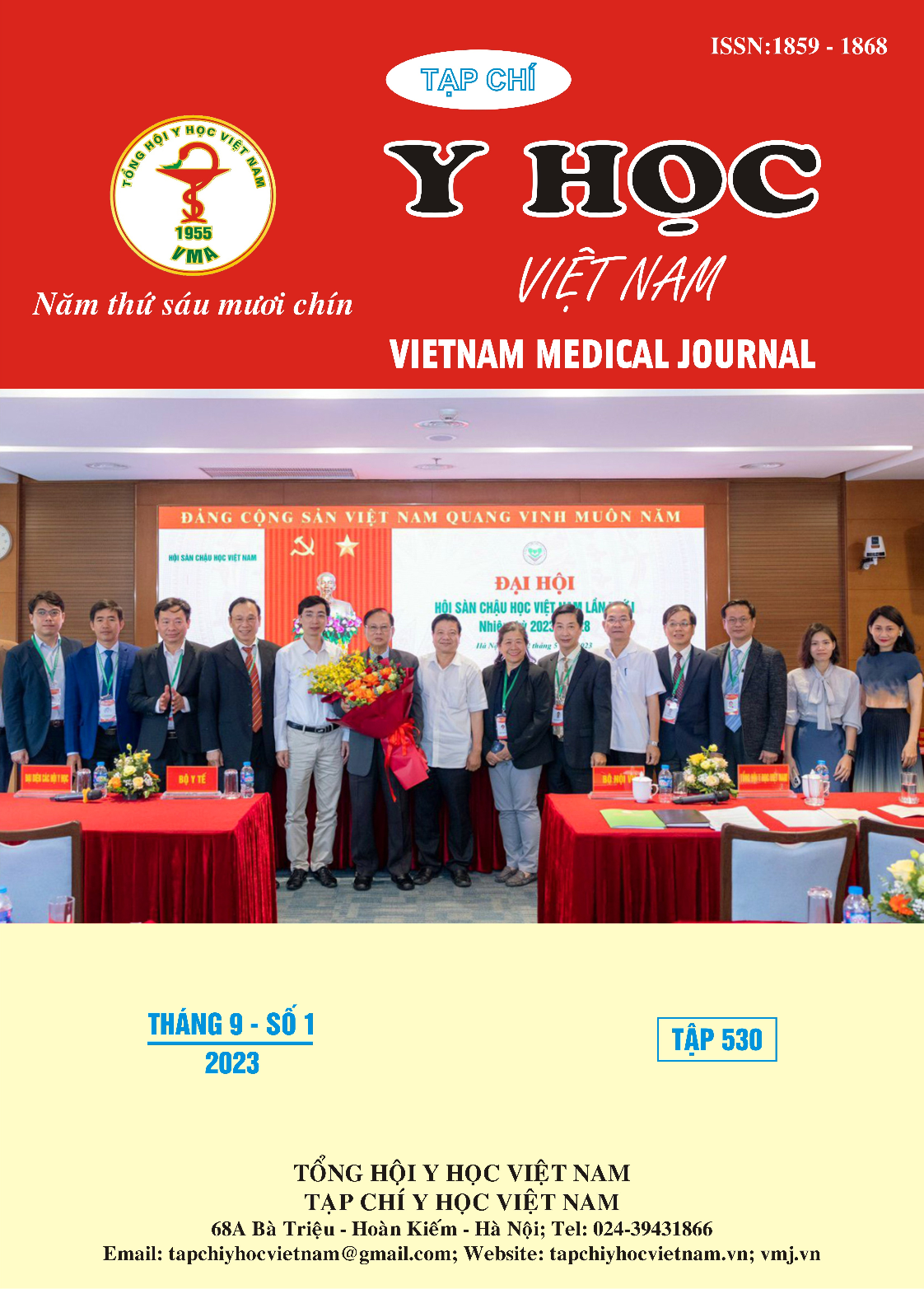SOME BACTERIOLOGICAL FEATURES OF VEHICLE-RELATED PNEUMONIA PATIENTS AT POLICY OFFICE DEPARTMENT OF NGHE AN FRIENDSHIP GENERAL HOSPITAL
Main Article Content
Abstract
Ventilator-associated pneumonia has been increasing treatment costs and burdens for the health system and for patients. Knowledge of pathogenic bacteria plays an important and decisive role in empiric antibiotic therapy to improve the effectiveness of treatment for patients Objective: To describe a characteristic of bacteria in patients. ventilator-associated pneumonia treated at the Poison Control Department of Nghe An Friendship General Hospital. Results: Out of 81 patient samples, 62 samples were infected with one type of pathogenic bacteria, accounting for 76.5%, 19 samples were infected with two types of pathogenic bacteria, accounting for 23.5%. Gram-negative bacteria accounted for the majority (91%) of which mainly Acinetobacter baumannii (41%). Acinetobacter baumannii was common in cultures with co-infected bacteria (79%). Among them, Acinetobacter baumannii + Pseudomonas aeruginosa (26.3%) and Acinetobacter baumannii + Klebsiella aerogenes (21.1%). Acinetobacter baumannii mainly causes late VAP (58.1%), the difference is statistically significant with p<0.05. Staphylococcus aureus mainly causes early VAP (26.3%), the difference is statistically significant with p<0.05.
Article Details
Keywords
Bacteria, Ventilator-associated Pneumonia, VAP, Nghe An Friendship General Hospital.
References
2. Hà Sơn Bình (2015), Nhận xét một số yếu tố liên quan và hiệu quả điều trị ở người bệnh viêm phổi liên quan đến thở máy, Luận văn Bác sĩ Chuyên khoa cấp II, Đại học Y Hà Nội, Hà Nội.
3. Prevention (CDC) Center for Disease Control and (2017), Ventilator -associatedpneumonia (VAP) Events.
4. Trịnh Thị Hoàng Anh (2020), Đánh giá vi khuẩn và tình trạng kháng kháng sinh của các loại vi khuẩn gây viêm phổi liên quan thở máy tại đơn vị hồi sức ngoại khoa Bệnh viện Bạch Mai năm 2020, Luận văn Thạc sỹ Y học, Trường Đại học Y Hà Nội, Hà Nội.
5. Hoàng Khánh Linh (2018), Nghiên cứu đặc điểm viêm phổi liên quan thở máy tại khoa Hồi sức tích cực Bệnh viện Bạch Mai giai đoạn 2017-2018, Luận văn Bác sĩ Chuyên khoa cấp II, Đại học Y Hà Nội, Hà Nội.
6. Đỗ Danh Quỳnh (2019), Đặc điểm lâm sàng viêm phổi liên quan đến thở máy ở người bệnh chấn thương và mức độ kháng kháng sinh của vi khuẩn lây bệnh, Luận văn Chuyên khoa cấp II, Đại học Y Hà Nội, Hà Nội.
7. J. Chastre và J. Y. Fagon (2002), "Ventilator-associated pneumonia", Am J Respir Crit Care Med. 165(7), tr. 867-903.
8. R. N. Jones (2010), "Microbial etiologies of hospital-acquired bacterial pneumonia and ventilator-associated bacterial pneumonia", Clin Infect Dis. 51 Suppl 1, tr. S81-7.
9. Giang Thục Anh (2004), Đánh giá sử dụng kháng sinh điều trị nhiễm khuẩn bệnh viện tại khoa Điều trị tích cực, Bệnh viện Bạch Mai năm 2003 - 2004, Luận văn Bác sĩ Nội trú Bệnh viện, Đại học Y Hà Nội, Hà Nội.


